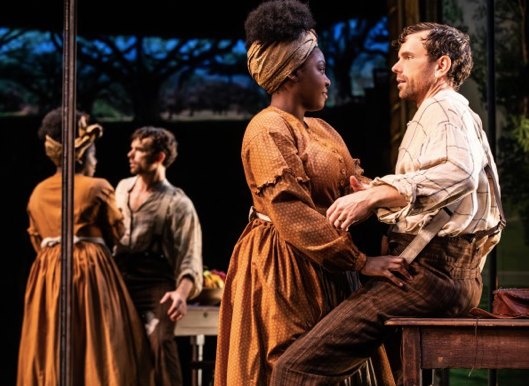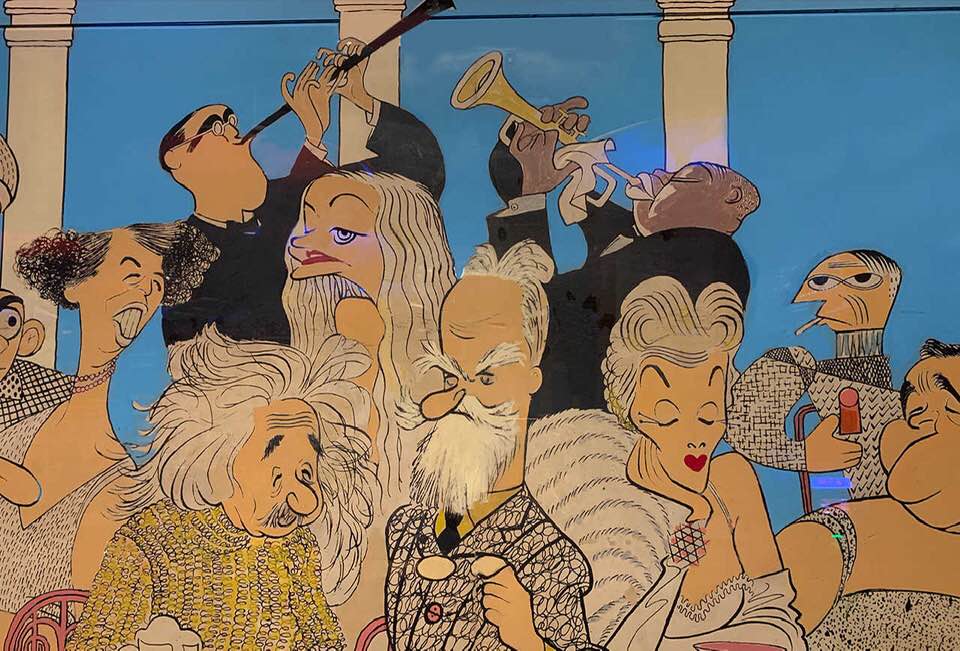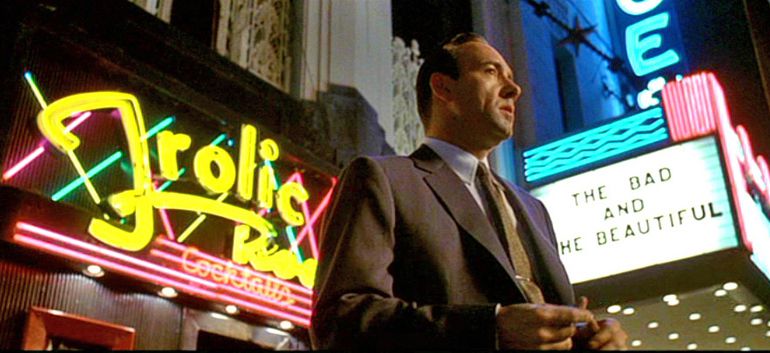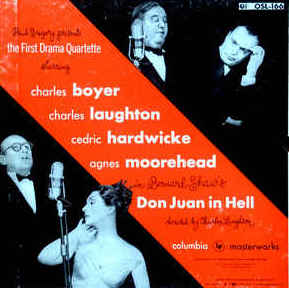“But who ever yet was offered a secret and declined it?”
Anthony Trollope, Framley Parsonage
Terry Teachout on the arts in New York City
“But who ever yet was offered a secret and declined it?”
Anthony Trollope, Framley Parsonage
Frederick Ashton rehearses Margot Fonteyn and Rudolf Nureyev in his 1956 ballet Birthday Offering at London’s Covent Garden in 1968. The score is by Glazunov:
(This is the latest in a series of arts- and history-related videos that appear in this space each Monday, Wednesday, and Friday)
“Above all things, never think that you’re not good enough yourself. A man should never think that. My belief is that in life people will take you very much at your own reckoning.”
Anthony Trollope, The Small House at Allington
* * *
When a new play by an unknown playwright is universally described as “controversial” yet meets with near-universal critical acclaim…well, it’s not controversial. In fact, there’s a better-than-even chance that it’s telling its audiences exactly what they want to hear. Witness Jeremy O. Harris’ “Slave Play,” directed by Robert O’Hara, which has now moved to Broadway after a noisily successful 2018 off-Broadway run….

Since there’s no way to review “Slave Play” without giving away its “reveal,” be forewarned that the following paragraph contains a spoiler: “Slave Play” opens with three interlocking scenes that seem to show whites having sex with their black slaves. In fact, what we’re really seeing are role-playing sessions by three present-day interracial couples who are undergoing “Antebellum Sexual Performance Therapy,” in which they act out elaborate fantasies of sex with slaves in order to overcome their difficulties in the bedroom (a twist that you’ll almost certainly guess on your own, as I did). Then we watch them participate in a group-therapy session during which it emerges that the whites are all ludicrously earnest “whitesplaining” left-liberal types who cannot begin to fathom why their long-suffering black partners would dream of finding fault with them….
This is, or could have been, fertile material for a take-no-prisoners satire in the manner of Lydia R. Diamond’s superlative “Smart People.” But while Mr. Harris does manage to work in a passable number of sharp-elbowed satirical digs along the way, the first two acts feel more like a short-hitting comedy sketch than anything else….
* * *
Read the whole thing here.
A friend of mine sent me this color photograph the other day, remarking that he suspected it was the only time that Louis Armstrong and George Bernard Shaw appeared in the same painting.
It is, as I immediately guessed, by Al Hirschfeld, but I knew nothing about it, and was delighted to learn that it’s a detail from a much larger mural by Hirschfeld that hangs on one of the walls of the Frolic Room, a Hollywood bar. The people portrayed therein are all—or, rather, were—celebrities of the Thirties. I recognized most of them, though a few eluded my grasp.
The Frolic Room opened in 1934 and has been in continuous operation since then. It is, I gather, is the last old-fashioned dive bar on Hollywood Boulevard, a fact universally known to historically aware Los Angelenos that had, I blush to admit, escaped my awareness until now. Located next door to the Pantages Theater, it has a long and elaborate history about which it is amusing to read. While I’ve never been to the Frolic Room, I’ve seen it, and so, most likely, have you. Its distinctive neon sign appears in any number of films, most recently in Quentin Tarantino’s Once Upon a Time in Hollywood and most prominently in Curtis Hanson’s L.A. Confidential, in which a key scene involving Jack Vincennes, Kevin Spacey’s character, unfolds there. You can bet that Mrs. T and I will have a drink there on our next visit to Hollywood.
Most of them are full of music: “I have all my records on tape, interviews, and every classical number that you can think of….And I index them—why, that’s my hobby.” His collection was an eclectic mishmash that comprises, among other things, Walter Gieseking playing Debussy, Helen Traubel singing the Liebestod, Debussy’s Prélude à l’après-midi d’un faune and Shostakovich’s First Symphony, the original-cast albums of The King and I and South Pacific, recordings of Julius Caesar and Don Juan in Hell, and jazz and pop in profusion: Bix Beiderbecke, Bunny Berigan, Bing Crosby, Fats Waller, Bert Williams, and a surprising amount of modern jazz, including albums by Stan Kenton, the Modern Jazz Quartet, Thelonious Monk, Gerry Mulligan, and George Shearing.

* * *
A scene from L.A. Confidential:
A video feature about the Frolic Room:
The First Drama Quartette’s 1952 recording of Don Juan in Hell:
From 2009:
Read the whole thing here.Much has been written in recent days, most of it silly and some of it ignorant, about the modern art that Barack and Michelle Obama have borrowed to display in the White House….
“Since we are all naturally prone to hypocrisy, any empty semblance of righteousness is quite enough to satisfy us instead of righteousness itself.”
John Calvin, Institutes of the Christian Religion

The thirty-eighth episode of Three on the Aisle, the (usually) twice-monthly podcast in which Peter Marks, Elisabeth Vincentelli, and I talk about theater in America, is now available on line for listening or downloading.
As was the case last month, only two of us were on hand this time: Peter Marks took a nasty fall on the morning of the taping and did painful damage to one of his knees, forcing Elisabeth and me to forge ahead without him. And while we already had a guest, Adam Feldman of Time Out New York, set for the episode, we had some trouble with Adam’s segment as well: I taped my end of the show in Connecticut, and it seemed that because of a glitch in the control board of our New York studio, we could only record two people at the same time! So Elisabeth and Adam shared the mike for his segment, while she and I handled the rest of the show. To our collective delight and relief, things went well anyway, and we plan to have Adam back later this season on a day when the gremlins are at rest.
In the meantime, here’s American Theatre’s “official” summary of the proceedings:
To listen to or download this episode, read more about it, or subscribe to Three on the Aisle, go here.This week, Peter is out, but Elisabeth and Terry are joined by Adam Feldman of Time Out New York to discuss American Theatre‘s annual list of the most-produced plays in the country. Terry and Elizabeth also go through the mailbag and answer questions from listeners, and talk about recent shows they’ve seen, some good and some… not so good.
In case you’ve missed any previous episodes, you’ll find them all here.
| M | T | W | T | F | S | S |
|---|---|---|---|---|---|---|
| 1 | 2 | 3 | 4 | 5 | ||
| 6 | 7 | 8 | 9 | 10 | 11 | 12 |
| 13 | 14 | 15 | 16 | 17 | 18 | 19 |
| 20 | 21 | 22 | 23 | 24 | 25 | 26 |
| 27 | 28 | 29 | 30 | 31 | ||
An ArtsJournal Blog